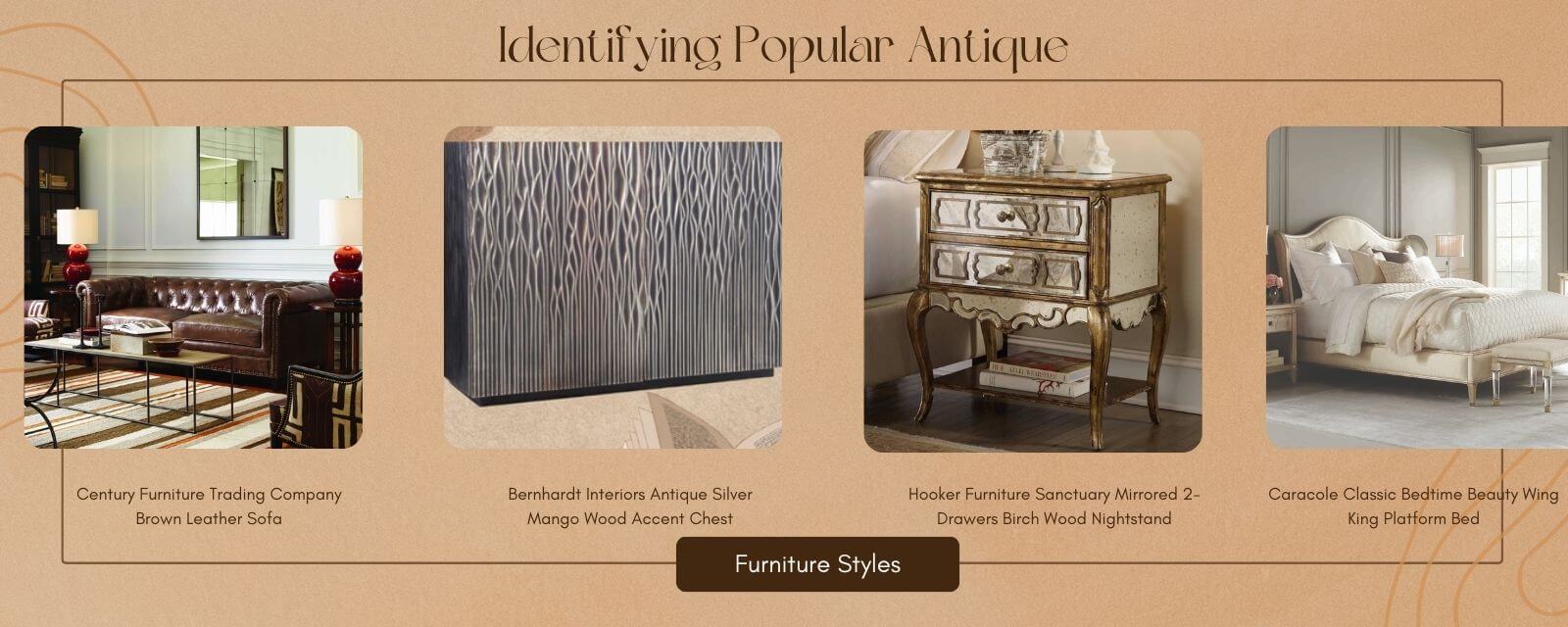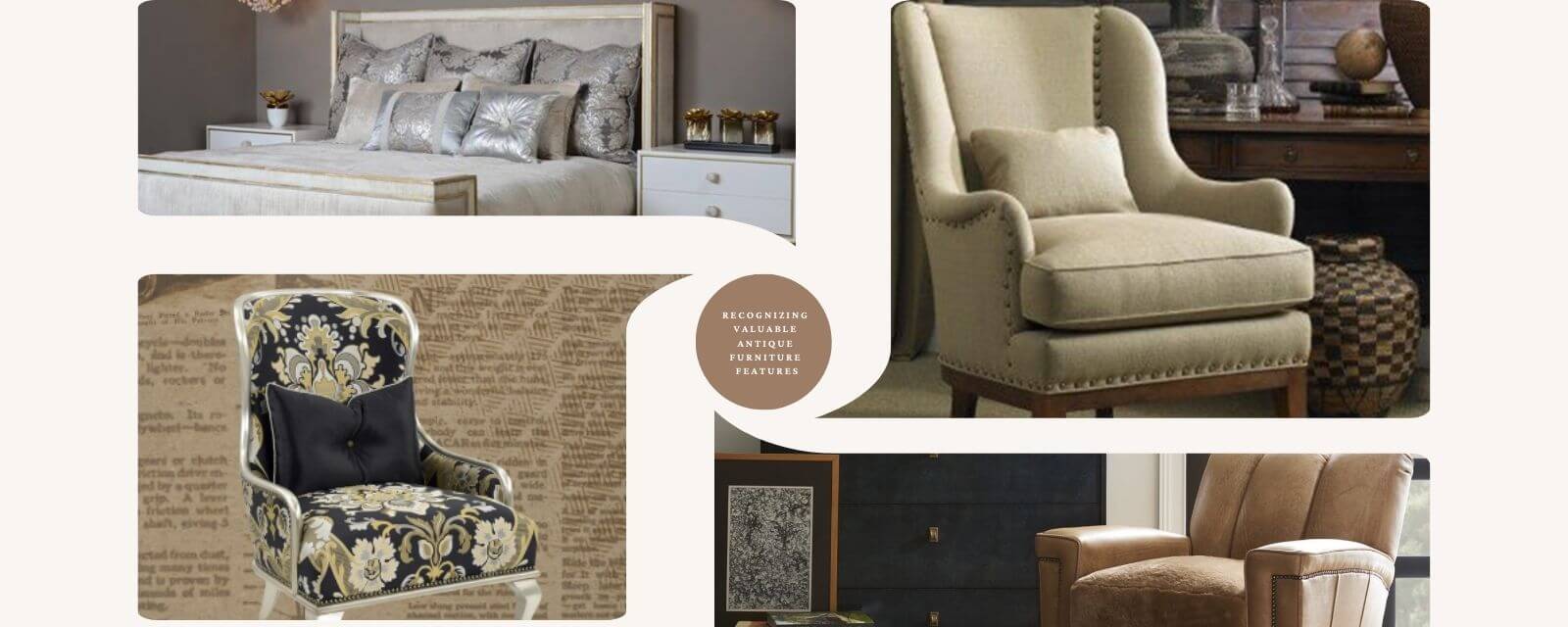


When buying antique furniture, it's essential to understand what makes a piece truly antique. In this section, we’ll explore the differences between antique and vintage furniture, identify popular antique styles, and recognize valuable features. For more inspiration on integrating vintage accents into your decor, check out our guide on vintage accents and vintage decor.

While the terms antique and vintage are often used interchangeably, there are key differences. Antique furniture is typically over 100 years old, whereas vintage furniture refers to items that are between 20 and 100 years old. Antique furniture is sought after for its historical significance, craftsmanship, and rarity, whereas vintage furniture appeals to collectors who appreciate the style and design of specific eras.
Antique furniture encompasses various styles, each with unique characteristics. Popular styles include Victorian, Georgian, Chippendale, and Queen Anne. Victorian furniture is known for its ornate details and rich fabrics, Georgian furniture is characterized by classical proportions and elegance, Chippendale furniture showcases intricate carvings and craftsmanship, and Queen Anne furniture features graceful curves and cabriole legs. For high-quality pieces in these styles, explore brands like Caracole, Hooker Furniture, Bernhardt Furniture, and Century Furniture.

When buying antique furniture, it’s crucial to know what features determine its value. Look for the type of wood used, the presence of handcrafted details, original hardware, and any unique or rare elements. Additionally, the piece's condition, including any repairs or restorations, can significantly affect its value. For a broad selection of antique and classic furniture, check out John Richard and Hickory White Furniture.
By understanding the differences between antique and vintage furniture, identifying popular styles, and recognizing valuable features, you can make informed decisions on how to buy antique furniture for your home or collection.

Conducting thorough research and finding reliable sources is essential when buying antique furniture. Whether you are an experienced collector or a beginner, here are some tips on how to find antique furniture that suits your needs.
One of the best ways to ensure the authenticity and quality of antique furniture is by purchasing from reputable dealers. Look for dealers who specialize in antique furniture and have a good reputation in the industry. Check online reviews, ask for recommendations from fellow collectors, or visit antique furniture associations for a list of trusted dealers in your area.
The internet has made it easier than ever to find antique furniture from around the world. Online marketplaces like Luxe Decor offer a wide selection of antique pieces from different eras and styles. Utilize search filters and detailed product descriptions to narrow your options. Make sure to read customer reviews and check the seller’s ratings before making a purchase.
Antique fairs and auctions provide unique opportunities to see and purchase antique furniture in person. These events often feature a wide range of items, allowing you to explore different styles and interact with knowledgeable sellers. Research upcoming fairs and auctions in your area and plan your visit accordingly. Remember to set a budget and do your research on the items you are interested in to ensure you make informed decisions.
When buying antique furniture, assessing its condition is crucial to ensuring you make a wise investment. Here are some key factors on how to spot antique furniture in good condition:
Begin by examining the overall structure of the piece. Check for any wobbling or loose joints, as these could indicate structural issues. Inspect the legs, corners, and edges for signs of damage, such as cracks, chips, or missing pieces. Pay attention to the condition of the upholstery or fabric as well.
Antique furniture often undergoes restoration and repairs throughout its lifespan. While some restoration work can enhance a piece’s value, others may detract from its authenticity. Look for visible signs of repairs, such as mismatched wood, screws, or glue residue. Assess whether the restoration work is skillfully done and respects the original craftsmanship.
The condition of antique furniture significantly affects its value. Pieces in excellent original condition with minimal wear and tear are generally more valuable than those with significant damage or alterations. Keep in mind that some collectors may prefer unrestored pieces for their historical authenticity, while others may appreciate the charm of well-maintained, restored furniture.
At Luxe Decor, we understand the importance of assessing antique furniture condition before making a purchase. Our curated collection of antique furniture undergoes thorough inspections to ensure quality and authenticity. Explore our range of exquisite antique pieces and find the perfect addition to your home or collection.
When buying antique furniture, it’s important to make informed purchasing decisions. Here are a few key factors to consider in this antique furniture buying guide:
Before beginning your search, it’s crucial to determine how much you’re willing to spend. Antique furniture can vary greatly in price, so having a budget in mind will help you narrow your options and prevent overspending. Remember to factor in additional costs such as restoration or shipping if needed.
When purchasing antique furniture, consider its provenance and historical significance. Knowing the history behind a piece can add value and enhance your overall appreciation. Look for furniture with well-documented origins and consider consulting with experts or reputable sources to verify authenticity.
By keeping these factors in mind, you can make more informed decisions on how to buy antique furniture. At Luxe Decor, we offer a wide range of high-quality antique furniture options that meet these criteria. Browse our collection and find the perfect piece to elevate your home’s style.



